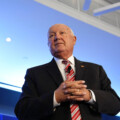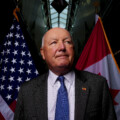In light of this past week’s assassination attempt on former U.S. President Donald Trump, The Hub’s editor-at-large Sean Speer exchanged with regular contributor Stephen Staley, who served as former Prime Minister Stephen Harper’s executive assistant as well as a member of his advance team for much of the Harper government, about Canada’s own processes and protocols to protect the prime minister from security threats.
SEAN SPEER: What is the relative role of the prime minister’s protective detail versus local law enforcement when he or she is traveling?
STEPHEN STALEY: Before we dive in, I do feel like I should pre-emptively caveat all my responses with a significant degree of humility and admission of ignorance, given that the U.S. Secret Service apparatus is different from, and more complicated than what we have in Canada. That said, in Canada, the RCMP has responsibility for protective security of the PM, the governor general, and incoming dignitaries from other countries. Within the RCMP there is a distinct security detail that handles the PM’s security, the Prime Minister’s Protective Detail (PMPD) who then leans on additional RCMP “VIP protection” units in local jurisdictions across the country.
Led by PMPD, they then supplement those details with additional local and regional police forces depending on where he is in the country, whether that’s for basic things like traffic control, broader site security, etc. So a distinct unit within the RCMP has the lead, working with other RCMP units and local police forces.
SEAN SPEER: What goes into the advance work for a prime ministerial event with regard to security? What type of preparation is carried out in terms of identifying possible sources of threat? And who leads those efforts?
STEPHEN STALEY: In short, a lot. We would obviously scout venues ahead of time with the RCMP, where both we and they would weigh in on risks and logistical feasibility depending on access points, relative threat levels within whatever jurisdiction we were in, entrance and egress points, backup options, etc. The RCMP also works with its intelligence unit and national and local authorities to do a broad threat assessment and scan.
Along with that, we advance folks took our role on that front seriously as well and would seek the advice of local colleagues who have their finger on the pulse to get a sense of whether they knew of anything being organized by way of protests or other hostilities, etc. I would add that both we and the RCMP paid a lot of attention to all eventualities once we selected venues, ensuring there were no unguarded access points, or that we had sufficient protection if we had to traverse more public areas.
SEAN SPEER: How much is the prime minister himself briefed on personal security issues? To what extent is that part of preparing him or her for a public event?
STEPHEN STALEY: This is dependent on specifics. In normal course you don’t want the principal worrying about small logistical details unnecessarily, so we would really only raise things to his attention if there were risks we were aware of. Things like expected disruptions, or venues that were a bit more exposed, and thus he needed to be prepared for interruptions. One of the political principles we tried to use, not just in advance work but more broadly, was “no surprises.” So while we prepared for everything we could and tried to limit risks and variables by preparation and creating good plans, if there was a risk of a surprise or something out of the ordinary, we would generally make sure he was aware.
SEAN SPEER: What are the rules of engagement to deal with possible threats? And who makes those calls?
STEPHEN STALEY: When it comes to real security threats, that’s the RCMP, and they have clear protocols for those things. Those of us who were involved with the logistics and planning did some of that training with the RCMP over the years, so we knew how they’d react in various scenarios, but once something goes sideways, they really take over and have operational plans to get the principal out of harm’s way as quickly as possible.
I heard some former U.S. Secret Service folks in the past couple of days say that “minimum to the threat, maximum to the principal” is their approach, and ours is much the same. You don’t know the extent or nature of the threat in a chaotic moment, so security wants to protect him physically immediately and get him out of that environment as quickly as possible. On less severe threats—unknown people in a venue that we had concerns about—we would have more of a discussion with security. We would take their advice of course, but in some circumstances it isn’t black and white.

Security looks on as Conservative leader Stephen Harper makes a campaign stop in Clarington, Ontario, August 26, 2015. Sean Kilpatrick/The Canadian Press.
SEAN SPEER: Based on your experience—and these recent developments—what if any changes do you think need to be made to strengthen the protection of Canada’s prime minister?
STEPHEN STALEY: This is an interesting one and I think there are some principles that apply to the horrific events of the past weekend in Pennsylvania, and forgive me in advance for going a bit long here. We’ve seen, and I’d wager we’ll continue to see, finger-pointing between different security agencies over who is to blame for some of the specifics of what happened.
The reality, though, is that if there is a gap or an issue—even if it’s a gap caused by a local police force making a mistake or overlooking something—that is and must be the accountability of the primary protective force. They know this better than anyone, and they must be responsible for identifying and supplementing any gaps from other police forces. Passing the buck may help in a short-term PR fight, but it doesn’t change the fact that in our case PMPD, and in the U.S. case the Secret Service, is accountable and must be held responsible.
I’ll just touch briefly on a follow-on issue where it seems like we likewise have some similarities, and that is the extent to which you use a central security unit versus relying to a larger degree on supplemental local forces. Over time, we built up a lot of trust with PMPD, knew them and they knew us and how we worked, and the leadership of that group was phenomenal. I have nothing but respect for the men and women of PMPD. At the same time, the RCMP bureaucracy wanted to slim PMPD down and have them use more distributed local resources. So basically send a smaller group from Ottawa and use more local RCMP VIP protection units, who are trained in the same principles but might not be perfectly enmeshed and held to the same high standards we saw in PMPD.
Shortly after we left office, my understanding is that the senior RCMP bureaucracy won the argument and over the past several years has moved more to the regional model. Perhaps they have good arguments from a resourcing perspective for that, but when it comes to maximizing protection to the principal, you’re making a compromise. Again, I don’t want to speculate too deeply on what happened in the U.S. given the significant differences between our security approaches, but the fact there’s already finger-pointing between different security forces is telling, I think, that the primary owner of security didn’t have complete coverage and control.
When nothing bad happens it’s perhaps too easy to compromise on some of these things, but ultimately you’re talking about potentially life and death scenarios, and it only takes one mistake for a catastrophic outcome. I think any trade-off on principal security for the sake of resourcing or any other objective needs to be judged in the light of what we saw this past weekend, and that is a lesson that’s applicable anywhere.








